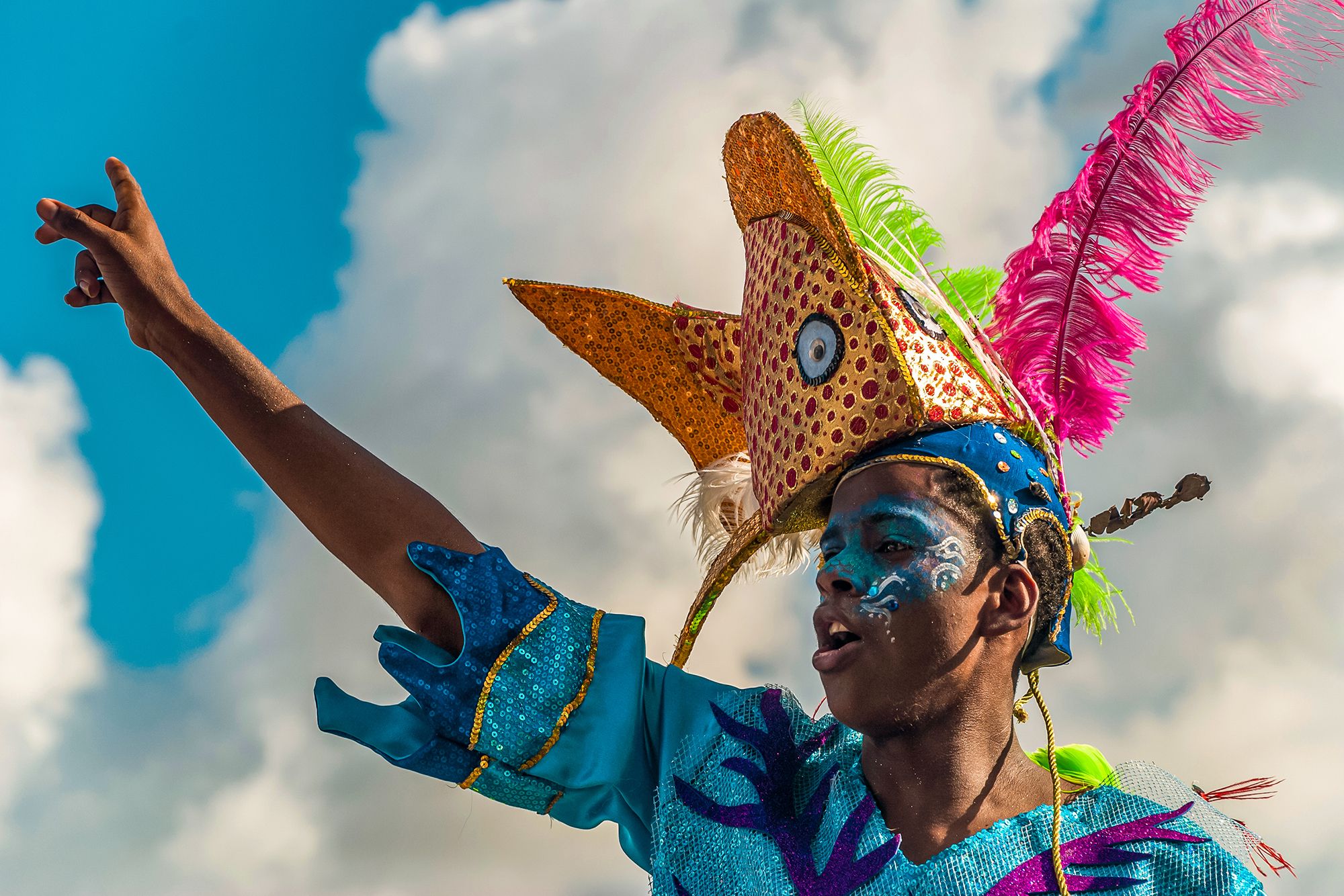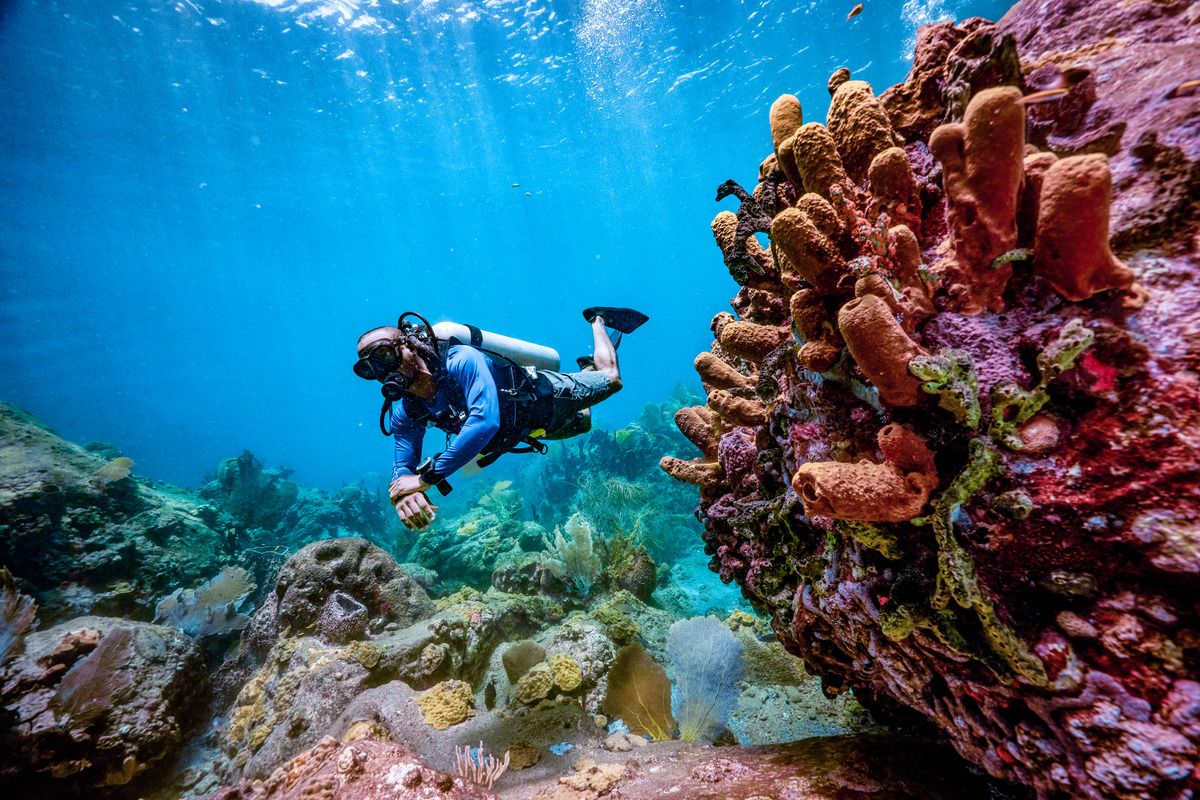The Best Snorkeling In The Caribbean For An Exceptional Underwater Adventure
Welcome to the Caribbean, where every island is a little world of its own, brimming with vibrant culture, lush landscapes, and endless ways to unwind. The turquoise waters here aren’t just for gazing—they’re teeming with life, inviting you to dive in and explore a whole new world beneath the waves.
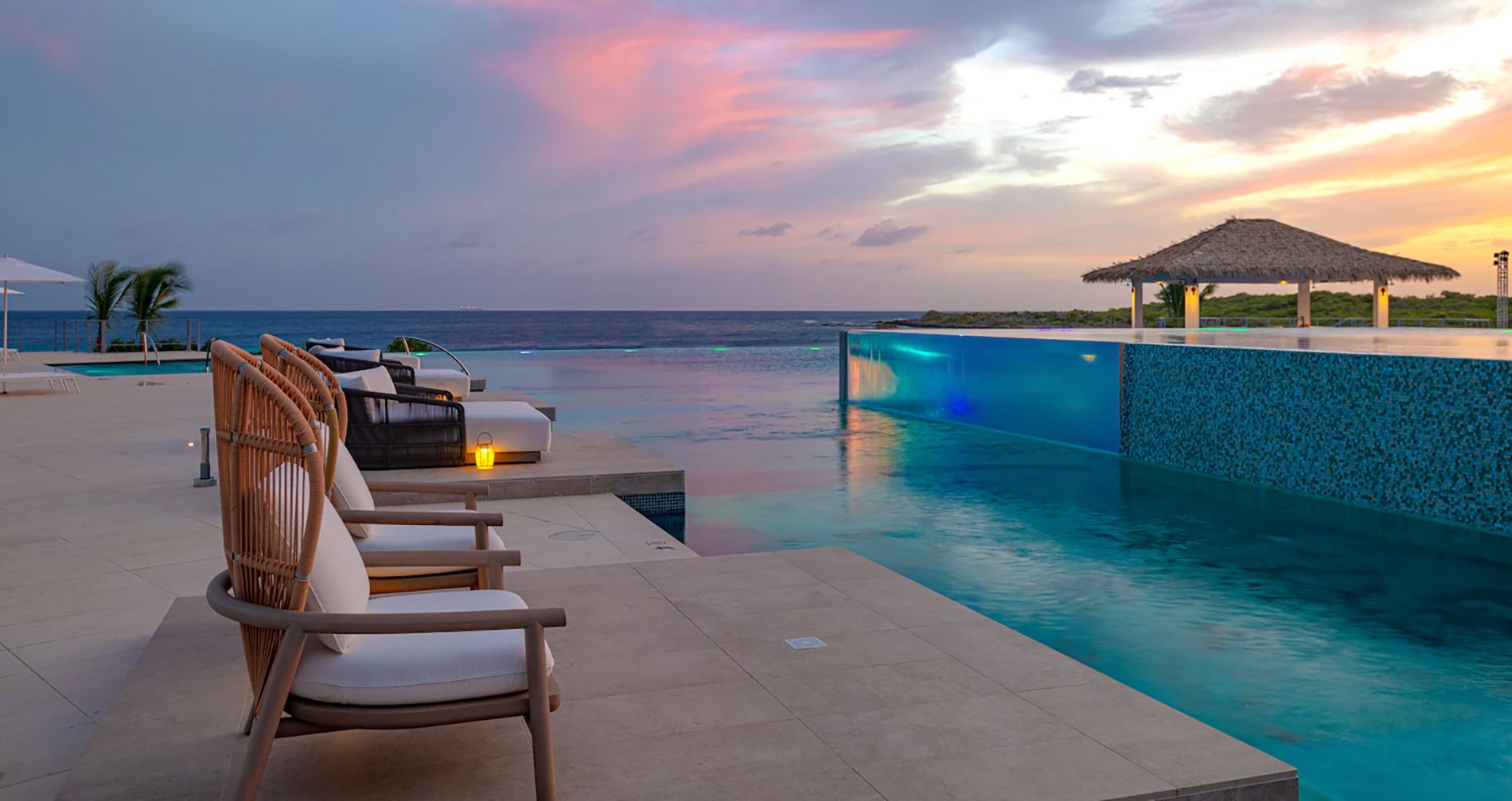
Picture: The infinity pool at Sandals Royal Curacao, located near some of the best snorkeling spots in the Caribbean!
Snorkeling in the Caribbean is pure magic. Glide alongside parrotfish, butterflyfish, and maybe even a sea turtle or two. Discover coral gardens, swim past colorful sponges, and stumble upon hidden treasures like shipwrecks. Whether you're new to snorkeling or an underwater pro, the Caribbean's natural beauty will leave you captivated.
Ready to discover the top spots for snorkeling in the Caribbean? Let’s dive in—your adventure starts here.
12. Jamaica

This island in the northern Caribbean is the third-largest in the region. Jamaica is one of the five islands that make up the archipelago of the Greater Antilles and, as part of its topography, it comprises a few major mountain ranges including the Blue Mountain Range, the Port Royal Mountains, and the John Crow Mountains.
However, despite these impressive features, the island is better known for its rich culture, beautiful beaches, and scenic landscape. What’s even better is the 600 miles of coastline and vibrant coral reefs in its midst that make Jamaica the ideal location for beginner and more advanced snorkelers. Here are some of the best snorkeling locations in Jamaica:
Our favorite snorkeling spots in Jamaica:
Runaway Bay
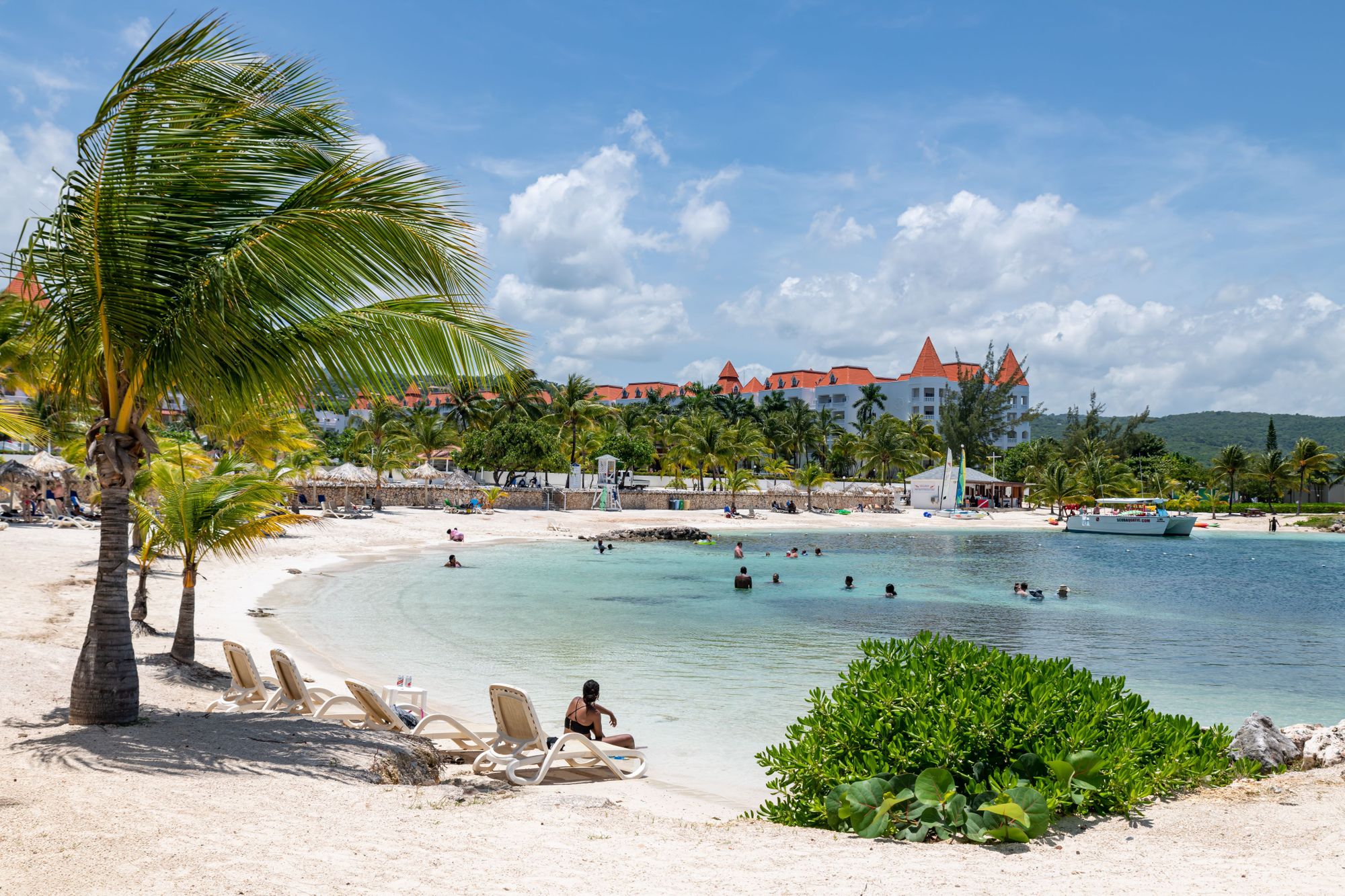
Traveling along Jamaica’s northern coast will take you to Runaway Bay, which is a sunny beach just off Ocho Rios. Runaway Bay is regarded as one of the island’s best snorkeling destinations with an active coral reef filled with marine life including sea urchins, creole wrasse, stingrays, and parrotfish. There are a few all-inclusive resorts in the Runaway Bay area that you can stay in during your visit to Jamaica, making snorkeling here super convenient.
Booby Cay, Negril
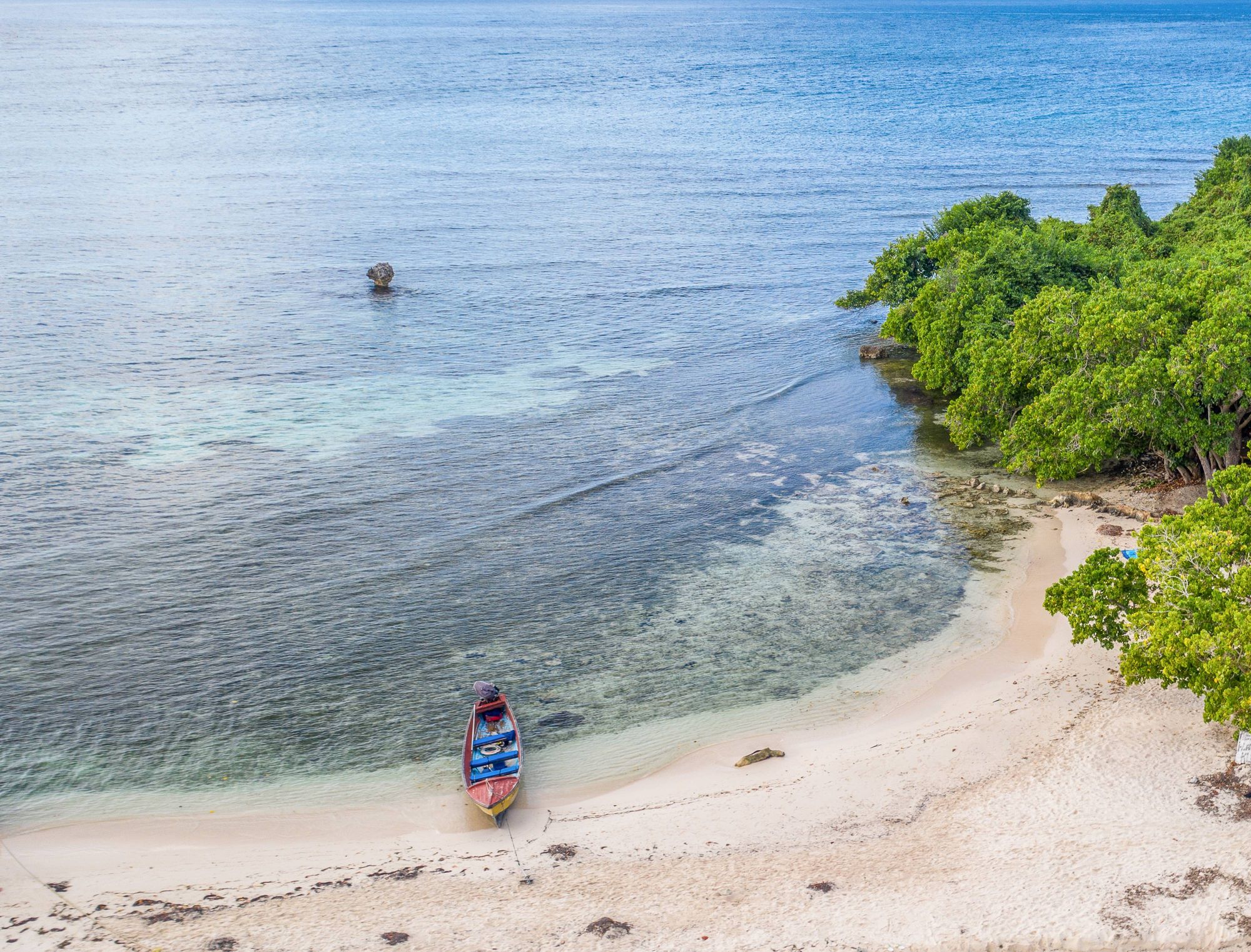
Just off the shores of Negril, Jamaica lies the island of Booby Cay. Though it may be quite small, beachgoers can have picnics, go sunbathing, swim, snorkel, and scuba dive along its many coral reefs. Many hotels provide tours of Booby Cay, which can include a fresh serving of fish and drinks and all the snorkeling equipment you’ll need.
Doctor's Cave Beach, Montego Bay
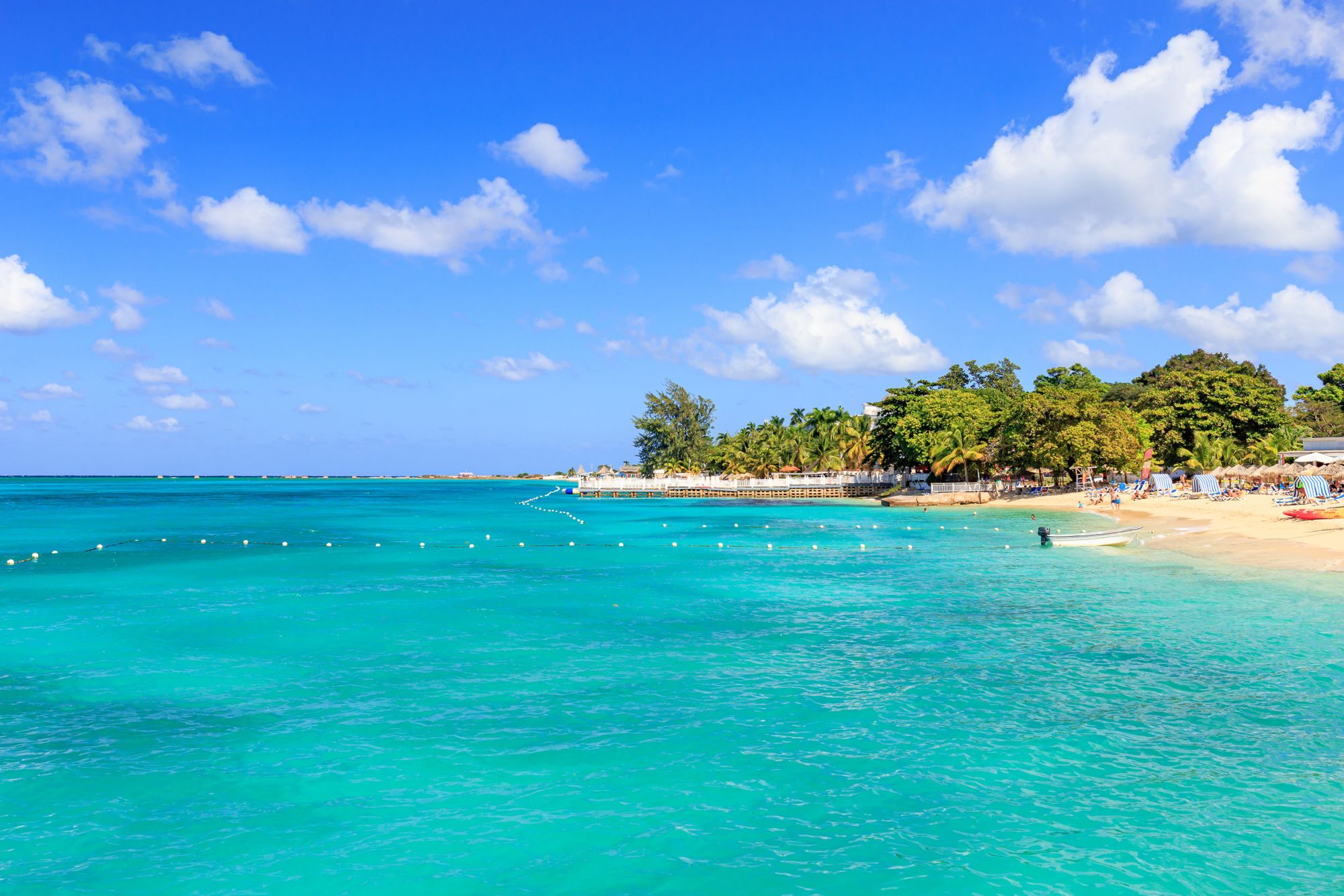
If you plan on spending time in Montego Bay while in Jamaica, then a visit to Doctor’s Cave Beach is a must This is a small beach off the north coast of Jamaica with shallow waters and fantastic views. Snorkeling in Montego Bay, particularly on Doctor’s Cave Beach, is so much easier due to the calmness of the water. There are plenty of coral formations just offshore that snorkelers can explore. At Doctor’s Cave Beach, you can immerse yourself in the potential healing powers of these waters while swimming among sea urchins, parrotfish, and even stingrays.
Expert tip: There’s lots of great snorkeling in Jamaica, and while on this island you can indulge in a luxurious experience at one of the all-inclusive resorts in Jamaica.
11. Turks & Caicos

The Turks & Caicos is a tropical archipelago of about 40 islands and cays found in the Atlantic Ocean. Only about eight of the islands are inhabited. These include Providenciales, North Caicos, Middle Caicos, South Caicos, Grand Turk, Salt Cay, Parrot Cay, Pine Cay, and Ambergris Cay. These islands are quite popular with the snorkeling crowd as there's quite a bit of marine life to see there regularly.
One of the best places to snorkel in Turks & Caicos is around the Turks & Caicos Barrier Reef. This barrier reef is the second largest of its kind in the Western Hemisphere and it is home to about 60 coral species and 250 fish species. Other than the Turks & Caicos Barrier Reef, there are other interesting places to snorkel in this region as well.
Our favorite snorkeling spots in Turks & Caicos
Bight Reef (Coral Gardens)

One of the most famous snorkeling sites in the Turks and Caicos Islands would definitely be Bight Reef (Coral Gardens) in Providenciales/Provo, which is one of the more populous islands. This reef extends about 107 miles (350 feet) from the shore and it is filled with radiant corals. Marine animals such as butterfly fish, snapper, green turtles, grouper, stingrays, and many others can be found here at Bight Reef.
Smith's Reef

Paying a visit to this barrier reef, located near Turtle Cove in Providenciales, is guaranteed to be one of the most amazing snorkeling experiences you will have. Upon arrival at the beach, you can dive into the water to explore the different coral reef systems, seagrass, and sea beds and swim among fishes such as the revered queen angelfish, barracuda, green turtles and so much more.
Northwest Point Marine National Park

This national park has many different snorkeling sites to choose from, including barrier reefs, sea sponges, caves, and seagrass beds. To fully enjoy a snorkeling trip to this park, you should book a tour with a tour guide that will take you to the best spots and enhance the experience. Be sure to take in the rugged landscape, the wetlands, and the bird life whilst you’re at it.
10. The Bahamas
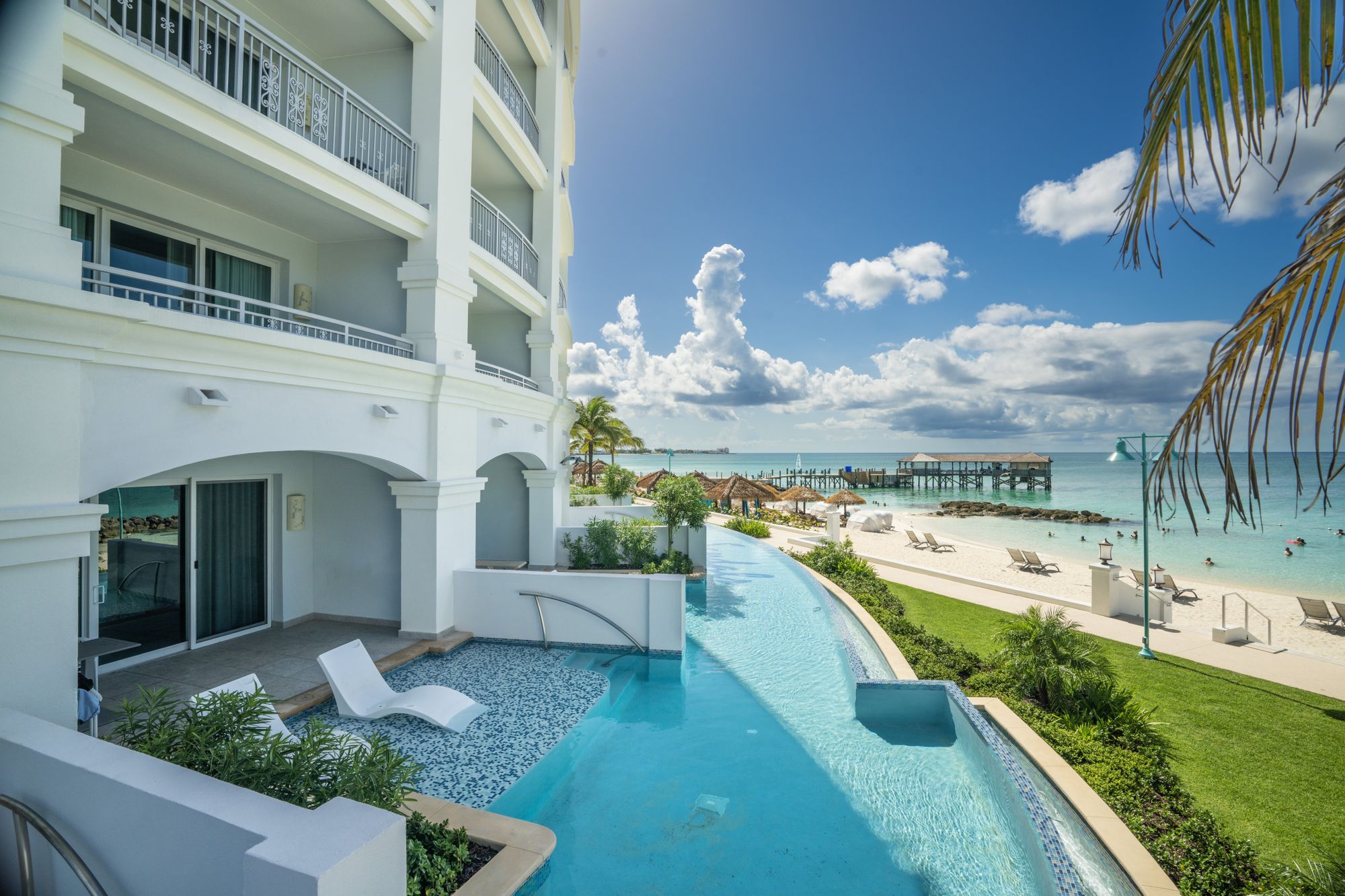
Picture: Swim-up suites at Sandals Royal Bahamian.
The Bahamas comprises more than 700 islands and cays. Only about 30 of them are inhabited, but visitors can enjoy so many wonderful and exciting adventures on them. These include day trips to islands like Exuma, historical tours, trips to the beach, and even rum tasting. Snorkeling is also on the list of popular things to do in The Bahamas.
A snorkeling trip can be especially thrilling in The Bahamas. Some of the locations you simply must explore include the Andros Barrier Reef, which is one of the longest coral reefs in the world at 190 miles. It is also the third-largest living organism in the world with more than 164 varieties of coral and fish. We’ve listed below three other snorkeling spots we love in The Bahamas.
Our favorite snorkeling spots in The Bahamas:
Stocking Island, The Exumas
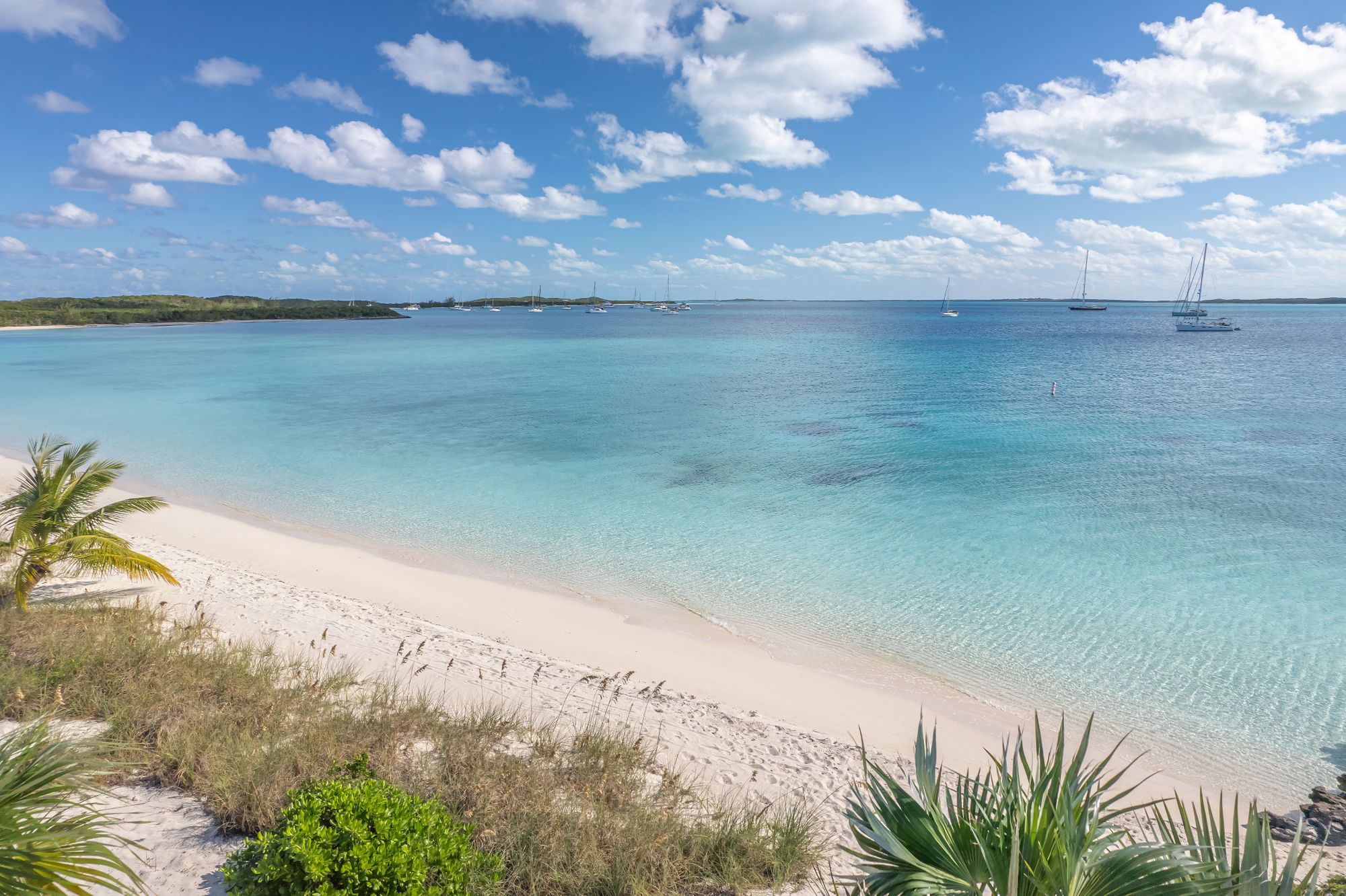
Stocking Island is an excellent snorkeling destination that is well known for its beautiful coral gardens and lively underwater world. In the waters around this island, you’ll find lots of undersea caves, blue holes, and marine life. All it'll take to get to Stocking Island is a short boat ride from Great Exuma. Aside from snorkeling, the peaceful nature of Stocking Island makes it a great location for a picnic or just relaxing.
Rose Island Reef, Nassau

A 30-minute boat trip from Paradise Island or a 25-minute boat trip from Nassau will take you to the Rose Island Reef. This is a shallow formation where you’ll get to see lots of tropical fish, sea turtles, barracuda, and stingrays right before your eyes. You can book day trips to Rose Island that typically include lunch, snacks, drinks, and snorkeling. When you're done with the Rose Island Reef, Nassau snorkeling is worth experiencing as well.
Exuma Cays Land And Sea Park, Exuma
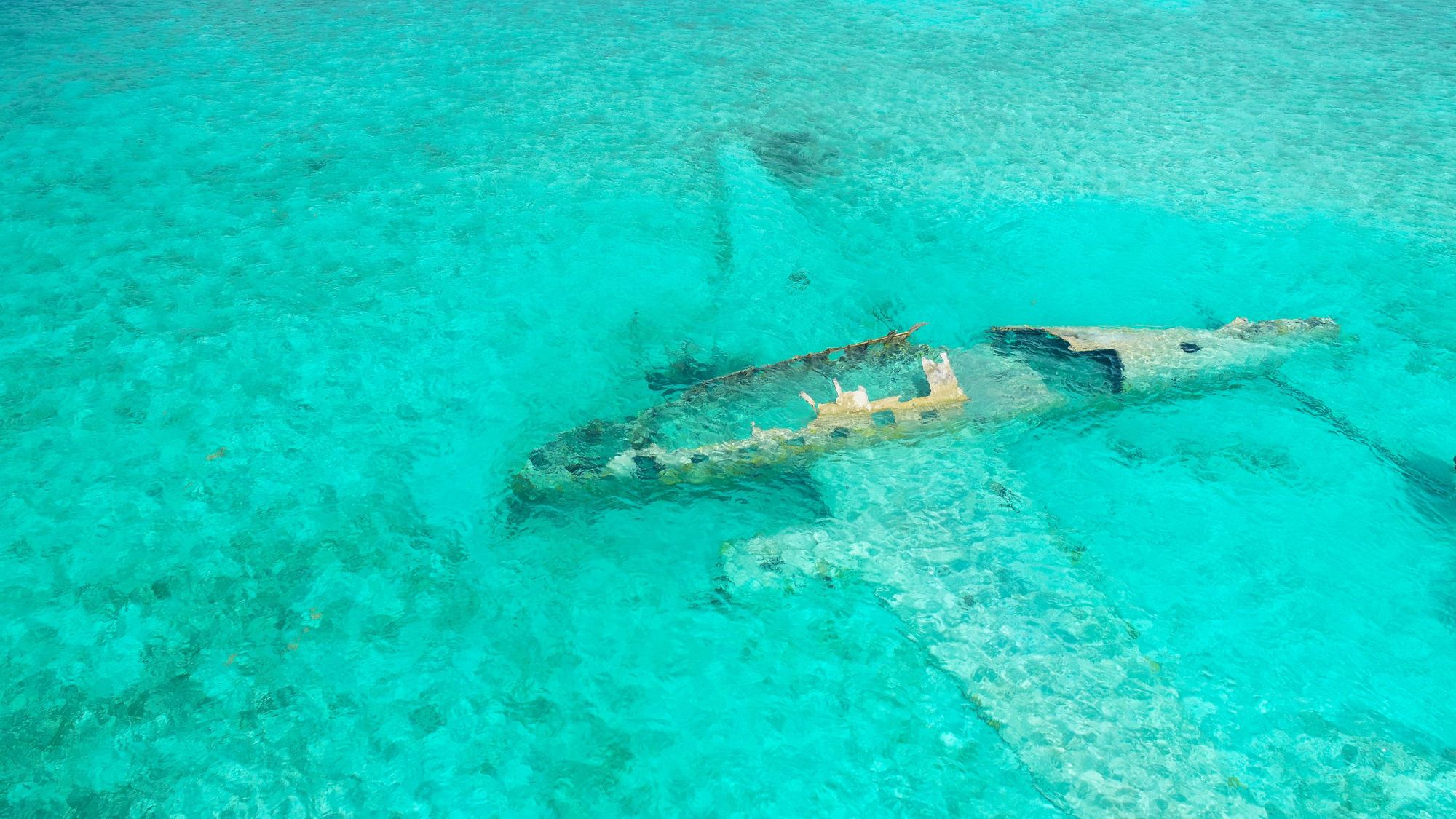
The Exuma Cays Land and Sea Park stretches more than 176 square miles. It is a marine reserve and the first of its kind in The Bahamas. The land and sea park consist of a wide expanse of reef, cays, and sea, and it is only accessible by private boat or charter. All wildlife within this area is protected, and fishing is prohibited. These protections have, over the years, helped the various species of marine life here to thrive, which can make for the most fulfilling snorkeling experience.
Expert tip: The Bahamas is one of the best dive destinations in the Caribbean. If you want the ultimate snorkeling experience on these islands, consider staying at one of the all-inclusive resorts in the Bahamas where snorkeling and scuba diving (up to two tanks per day) can be included in your stay.
9. Barbados

Barbados is a Caribbean island in the Lesser Antilles that measures only 21 miles long and 14 miles wide. Despite its small size, this island is more developed than some of the other Caribbean islands and has a booming tourism sector. The all-inclusive luxury resorts (see this Sandals Barbados review), white-sand beaches, shopping centers, and other attractions make Barbados the ideal place to spend your vacation.
Barbados offers a unique experience for snorkelers. As a coral limestone island, Barbados has several coral formations and has been praised for having some of the healthiest reefs in the Caribbean. There are also many underwater shipwrecks that can add to the thrill and excitement of snorkeling.
Our favorite snorkeling spots in Barbados:
Gibbs Beach

A trip along the west coast of Barbados will take you to Gibbs Beach, a serene, undisturbed location with shady trees, calm waters, and white sands. The clear, tranquil waters create the perfect conditions for snorkelers who are sure to find rainbow fish, cowfish, needlefish, and other intriguing marine life.
Carlisle Bay
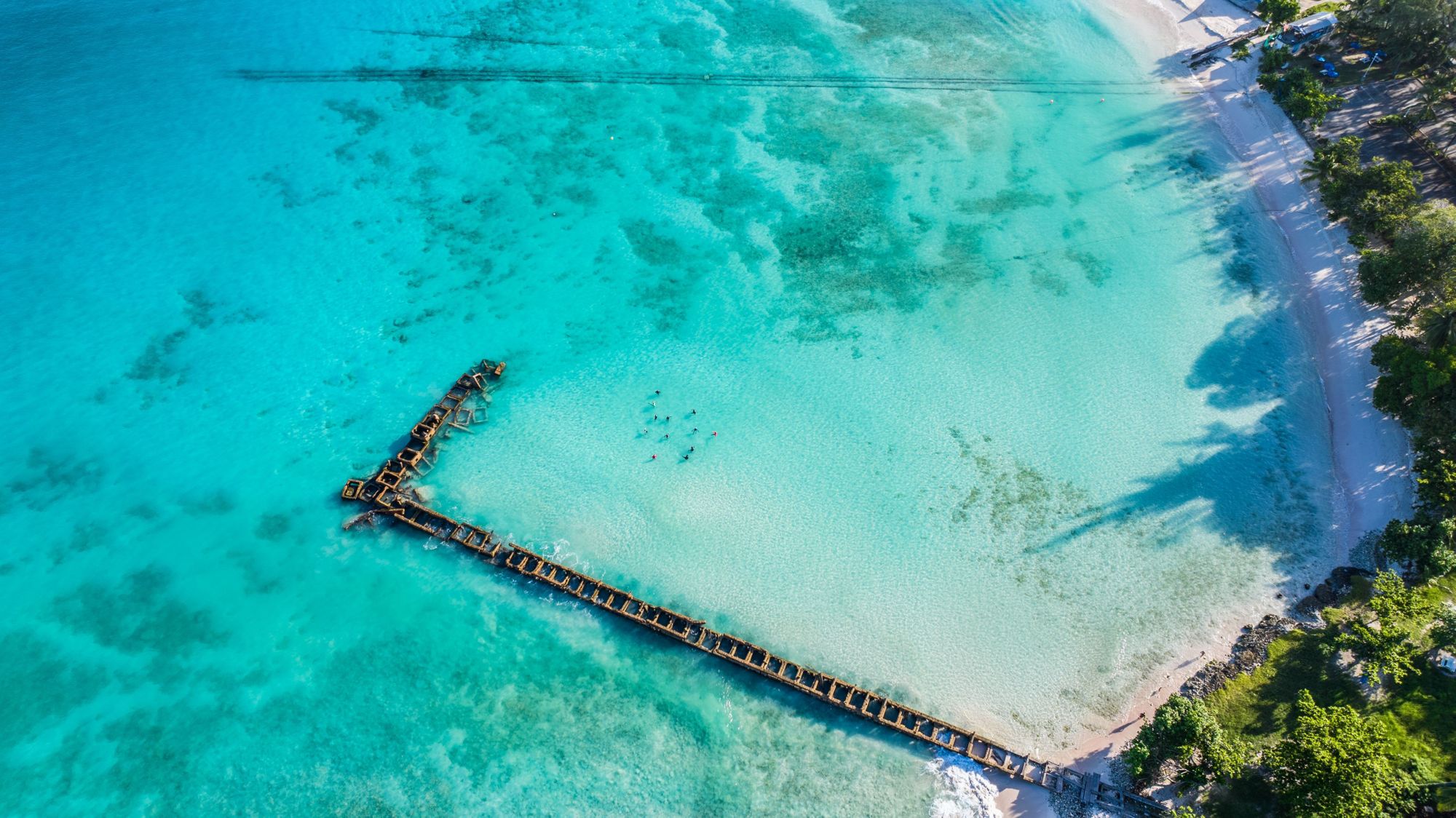
This harbor, which is named after a Lord Proprietor of Barbados, is a relaxed spot with one of Barbados’ largest beaches. Carlisle Bay is also part of a marine park that is popular among scuba divers looking to explore the six underwater shipwrecks. If you want to snorkel here, you’re very likely to enjoy exploring this site and seeing all the relics, sea turtles, and manta rays that are often spotted here.
Freshwater Bay (Pile Bay)
To the southern end of Paradise Beach lies Freshwater Bay, also known as Pile Bay. This beach gets its name from the freshwater springs found undersea in this area. Freshwater Bay is popular among anglers and visitors looking to laze around in the sun. Snorkelers are also in for a treat because the shallow waters, colorful fish, and coral formations make it a great snorkeling site, especially for beginners.
Expert tip: Barbados has some of the best snorkeling sites in the Caribbean and staying at an all-inclusive resort in Barbados might be the perfect opportunity to see some of the best ones. At Sandals Barbados, you can book all your dive trips through the resort, which will be helpful as well!
8. U.S. Virgin Islands (USVI)

Saint Croix, Saint John, and Saint Thomas are among the group of 50 islands that make up the U.S. Virgin Islands in the Lesser Antilles. Snorkelers have many options to choose from in this region as coral reefs are found around each of the main islands and near most of the other islets. These include patch reefs, deep reefs, and groove formations.
Each of the main islands offers snorkelers a different experience. Saint Croix, which is the largest of the aforementioned islands, has the best-developed barrier reefs. Meanwhile, the day boats in Saint Thomas take visitors to reefs offshore, while the remote Saint John allows snorkelers to swim among the marine life. This includes trumpet fish, sea turtles and so much more.
Our favorite snorkeling spots in the U.S. Virgin Islands:
Leinster Bay (Saint John)
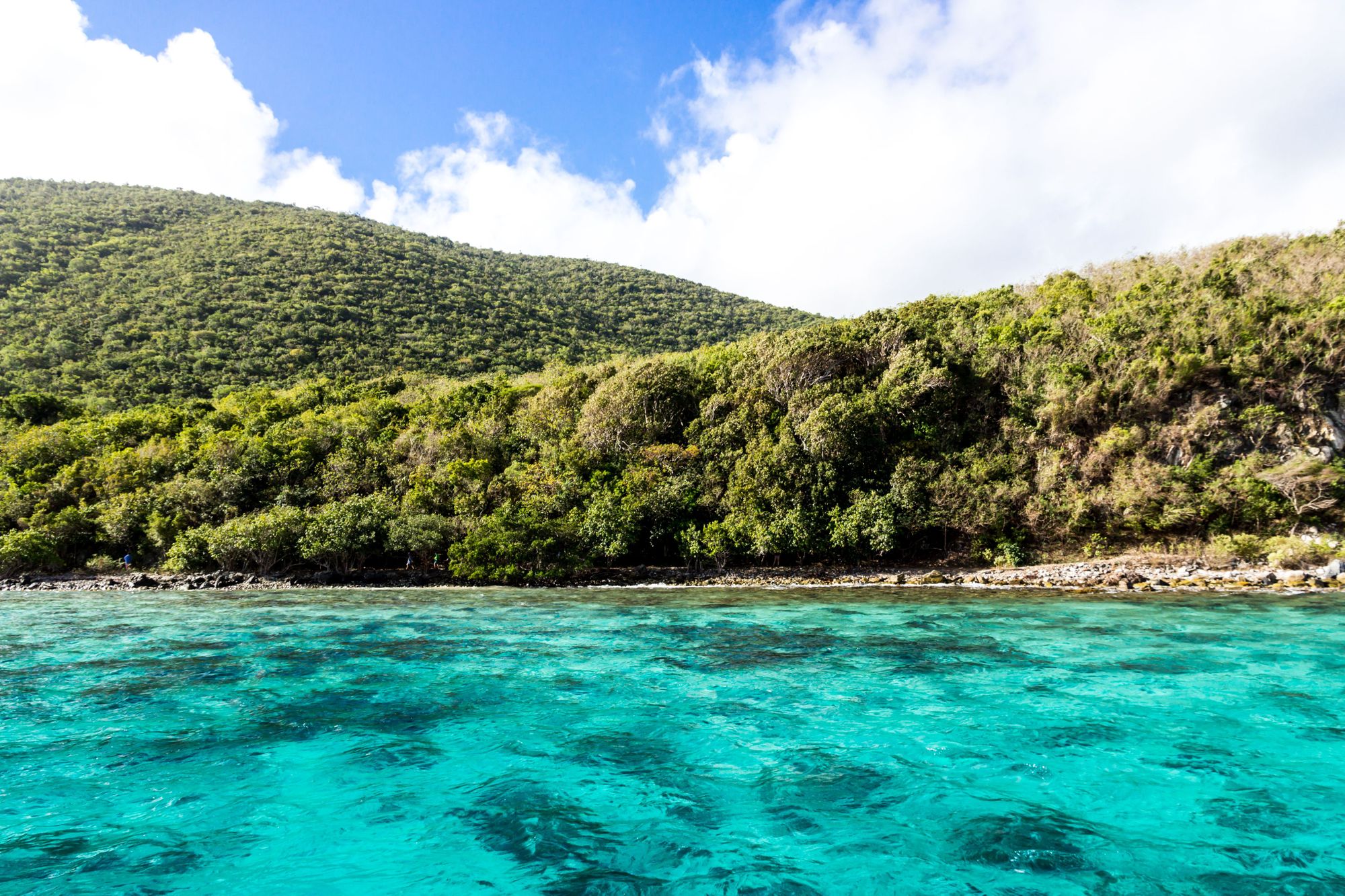
Leinster Bay, also called Watermelon Cay, is one of the best snorkeling sites on the island of Saint John. It has a diverse marine life that snorkelers will appreciate, thanks to the schools of fish like blue tang, barracuda, and grunts and the presence of seagrass beds and coral. Conch, sea turtles, and stingrays are also plentiful here. Access to snorkeling is simple in this area, either you can pass through the beach or use the cobblestone area nearby.
Buck Island (Saint Croix)
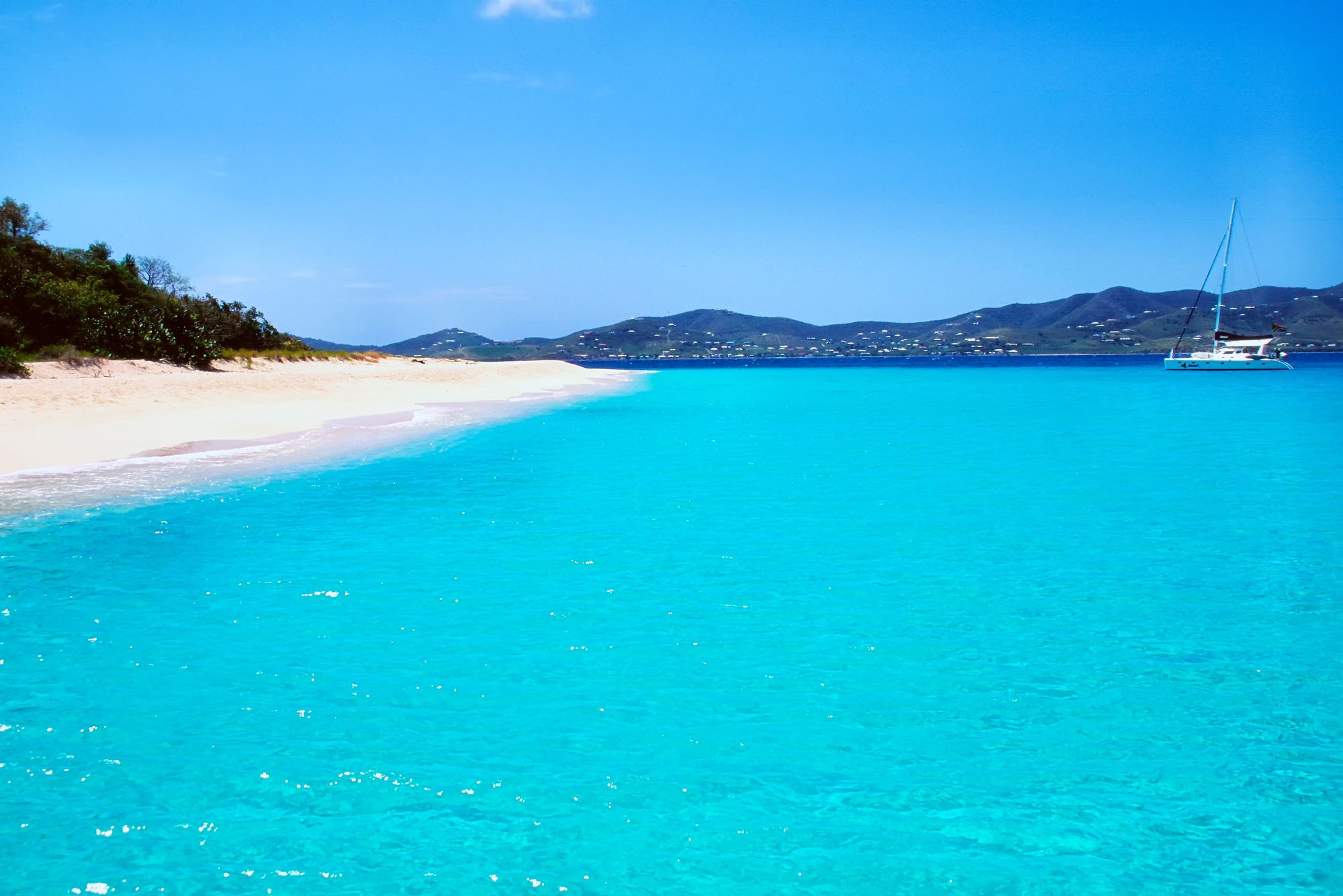
Buck Island is a national park in Saint Croix that spans 167 acres. This area consists of an underwater park and a trail. If you want to visit while in Saint Croix, you’ll have to book a tour with one of the snorkeling companies, granting you access to the wonders of the park and all its monuments that you are then free to discover by yourself. Keep an eye out for needlefish, blue tangs, parrotfish, eagle rays, and hawksbill turtles that have made this park their home.
Trunk Bay (Saint John)
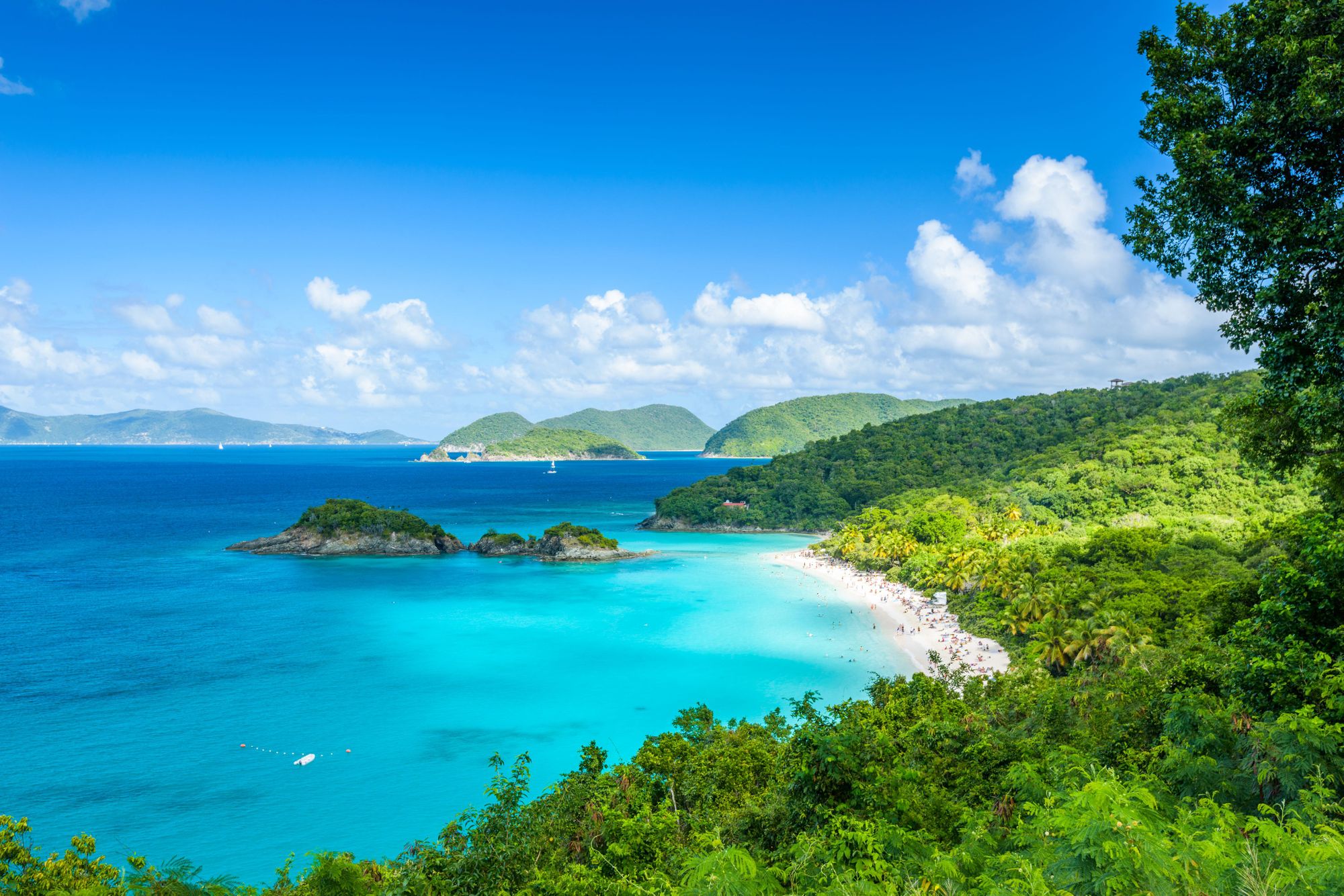
Trunk Bay is a protected beach area in the Virgin Islands National Park. It is well-loved by locals and visitors alike. The underwater snorkel trail at Trunk Bay is enjoyable and interesting and lets you see the variety of sea life present here including stunning coral, exotic fish, crabs, and spotted drums. Snorkeling here is a good start for beginners.
7. Puerto Rico

Puerto Rico is a tropical, Caribbean island that can be found to the east of the Dominican Republic and to the west of the Virgin Islands. Similar to The Bahamas, this archipelago is made up of smaller cays such as Old San Juan, Culebra, and Vieques, with the previous two being the most popular ones. Although Puerto Rico is most known for its tropical climate, language, and music, it has so much more to offer, like diving.
Puerto Rico certainly is the place to be for snorkelers and scuba divers, no doubt due to its extensive coastline, clear waters, and the distinct marine world that contains a little bit of everything - mangroves, coral formations, seabeds, and tropical fish. Puerto Rico is indeed a snorkeler’s dream.
Our favorite snorkeling spots in Puerto Rico:
Seven Seas Beach (Fajardo)

Seven Seas Beach is calm and tranquil and it is located in the eastern town of Fajardo, Puerto Rico. It is well equipped with bathrooms and showers and even picnic benches for a fun day out. The warm, shallow waters here are welcoming to sea bathers, and snorkelers in particular will appreciate the view of the coral reefs and sea life. If you choose to go snorkeling here, you might spot some interesting sea creatures among the coral and rock formations on the beach.
Steps Beach (Rincón)

Steps Beach is located in the town of Rincón along the west coast of Puerto Rico. This town is a popular spot for surfing during the winter, but when the tide slows down, the waters at Steps Beach are calm enough for snorkelers to explore. Snorkelers would be interested in the diversity of the underworld here where tropical fish, various sponges, sea turtles, and the Elkhorn Coral Forest can be found.
Escambrón Beach (San Juan)

Escambrón is a charming beach in the northeastern town of San Juan in Puerto Rico. It is lined with palm trees that provide adequate shade while the coral reef formations protect the beach itself. Snorkeling at Escambrón is sure to be rewarding and snorkelers can choose between the calm waters of Playa 8, the main beach, and Playa 9 called Bateria El Escambron.
6. Saint Martin / Sint Maarten

This small island is further divided into two cultural hubs: namely Saint Martin, which is part of the French Republic, and Sint Maarten, which is part of the Kingdom of the Netherlands. The influence of both of these territories undoubtedly contributes to a unique culture on the island and its language, customs, and rituals.
The diversity of this dual island can be seen in the variety of adventures visitors can participate in. Snorkeling is one such activity with the best spots being easily accessible. This is a plus for those looking to venture off on their own while enjoying a dive vacation here.
Our favorite snorkeling spots in Saint Martin // Sint Maarten:
Mullet Bay (Sint Maarten)

Mullet Beach in southern Sint Maarten is a calm beach that is popular among locals looking to enjoy some swimming, surfing, or snorkeling. The wide variety of marine life here makes snorkeling very rewarding. Sightings can include octopus, puffer fish, angelfish, and wrasse. There are lots of fish by the rocks at Mullet Bay, but you may want to be careful because the waters tend to be a bit rough.
Baie Rouge (Saint Martin)

Baie Rouge is located in Saint Martin, which is the French-speaking side of the island. This beach is a beautiful one, with pink sands and turquoise waters. It is relatively remote, giving visitors privacy and alone time. Snorkelers will appreciate the eastern side of the beach, particularly because of the vibrant reefs where you’re likely to see fishes like snapper and blue tang.
Little Bay Beach (Sint Maarten)

Between Simpson Bay and Philipsburg lies Little Bay Beach, a picturesque and slightly secluded spot with gentle waters and white sands. Snorkelers will enjoy a dive experience here that can come with lots of pleasant surprises. The best area to snorkel here is near the Tiki Hut on the left side of the bay. There you’ll find wrecks from helicopters and submarines where marine animals now live.
5. Grenada

Grenada is an English-speaking island located in the southern Caribbean. Venezuela and Trinidad and Tobago can be found south of this island, and Saint Vincent can be found to the north. Grenada has two sister isles, Carriacou and Petite Martinique, both smaller islands. There are also many other islets to the north of Grenada that form part of the Grenadines.
This island is relatively untouched in comparison to other Caribbean territories, allowing it to retain much of its natural beauty and awe. Grenada has a rich marine life with plenty of coral reefs that are preserved and healthy. All of these factors add up to quite the incredible snorkeling experience!
Our favorite snorkeling spots in Grenada:
Grand Anse Beach
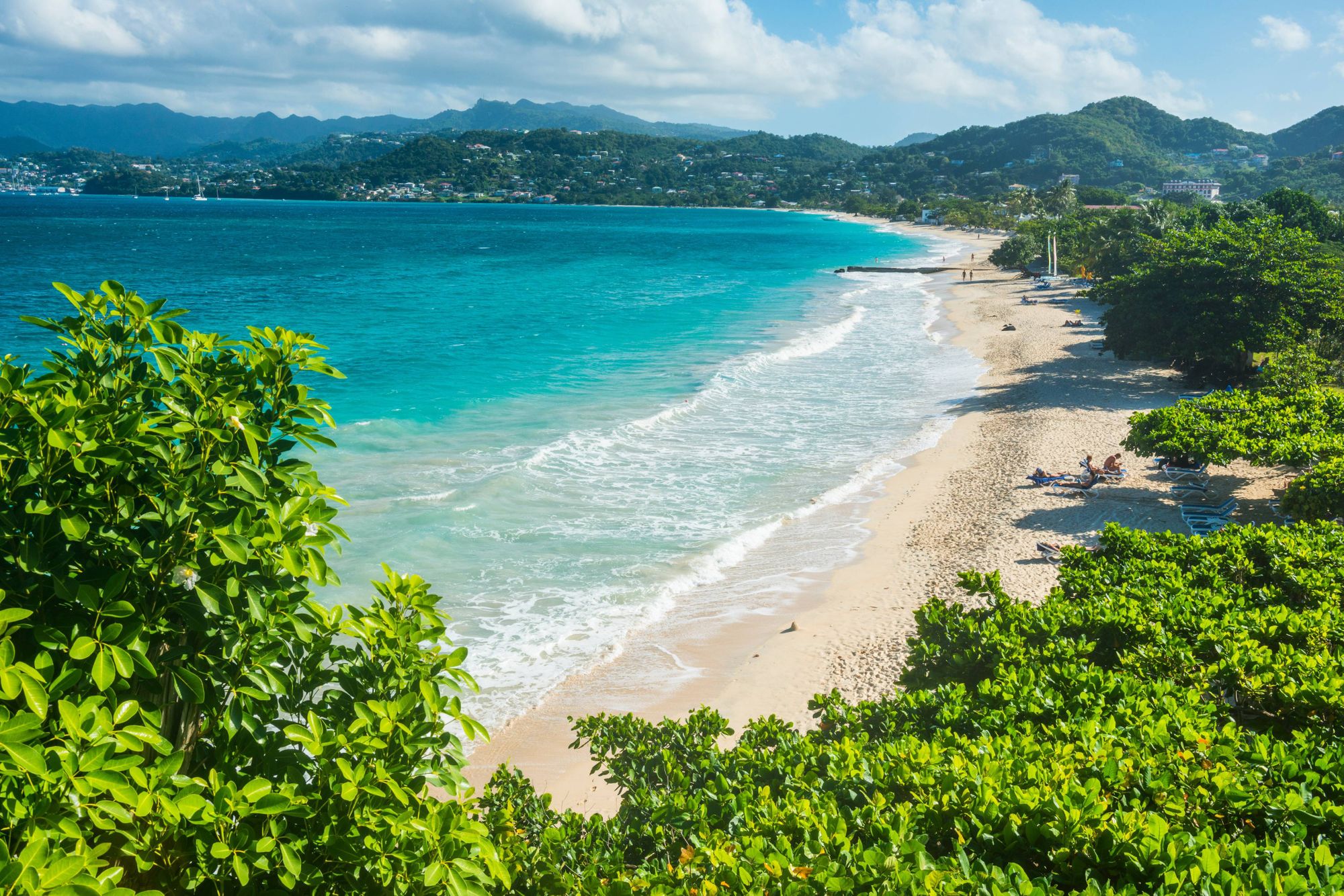
Grand Anse Beach stretches for two miles and quite a few hotels and resorts in Grenada are located near this beach. Grand Anse Beach is located near the capital of Saint George’s and thus is easy to access. No matter your skill level, you're likely to find a good place to snorkel on this beach. The best time to snorkel here is early in the morning to avoid crowds. During a snorkeling session at Grand Anse Beach, you’re likely to come across lobster, squid, shrimp, and lots of colorful fishes.
Molinere Bay (Underwater Sculpture Park)

In 2006, the Molinere Bay Underwater Sculpture Park was installed in Grenada after it was designed by British artist Jason De Caires Taylor. Eight hundred square meters of space was used to accommodate the 75 sculptures. Today, there are guided tours to the sculptures, and scuba divers and snorkelers can enjoy admiring this work of art and the marine animals that frequent this space.
Levera Beach

Levera Beach is part of the 450-acre Levera National Park in northeastern Grenada. This is one of the best snorkeling locations on the island and it gives snorkelers an up close and personal view of coral reefs, mangroves, swamps, and seagrass beds. The influence of the Atlantic means that this beach may be a bit rough, so snorkelers should stick to the swimming areas that have been designated.
Expert tip: Staying at an all-inclusive resort in Grenada can make it easy to have that exceptional underwater adventure you're looking for. Check out this Sandals Grenada review, which will tell you everything you need to know about what guests love at this resort.
4. Antigua
Antigua belongs to a chain of islands in the Caribbean Sea and measures only 108 square miles. Barbuda and Redonda are two other islands in the chain and they are significantly smaller. Antigua has a rugged coastline and together with Barbuda has several beautiful beaches — 365 to be exact. This welcome reality gives beachgoers plenty of options to choose from to suit whichever experience they seek.
Antigua is almost completely enclosed by coral reefs, with the majority of the fringing corals to the east of the island. The north and south coast are surrounded as well, while the west coast has more sandy areas. All of this means that regardless of which part of the island you choose to stay in, you can snorkel at just about any location.
Our favorite snorkeling spots in Antigua:
Deep Bay Beach
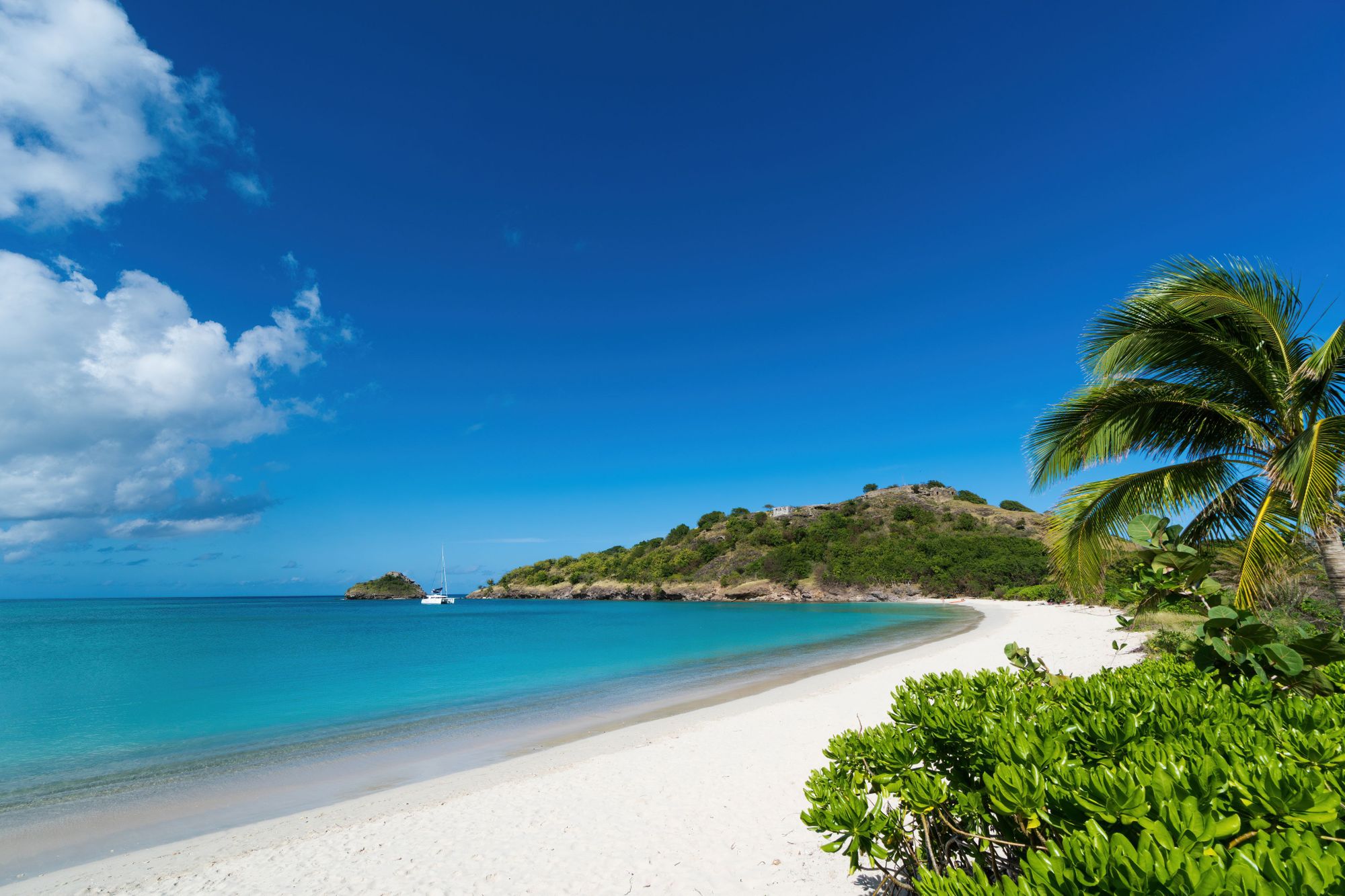
Deep Bay Beach is located near Saint John’s, the capital of Antigua. The waters of this west coast beach are calm and transparent making it ideal for snorkeling or scuba diving in Antigua. There are a variety of fish there as well as sea turtles you might come across. You’ll also be able to check out some of the shipwrecks that these creatures live in from above, such as the “Wreck of the Andes” that sank decades ago.
Stingray City

Stingray City is true to its name as it is indeed filled with stingrays. These gentle creatures are accustomed to human contact and love to be pampered by snorkelers. To get to this special city while in Antigua, you’ll need to book a boat trip with a local company. The trip will be worth it though, and you’ll love all the marine animals and friendly stingrays you get to see while snorkeling.
Darkwood Beach

Darkwood Beach is another beach on the west coast of Antigua that is known for great snorkeling. Since it is such a quiet beach, you can have a peaceful experience here that includes sunbathing, swimming, and snorkeling. The coral reef off the coast of this beach is interesting to explore, and while snorkeling here you might come across barracuda, sea turtles, and other marine animals.
Expert tip: If you're not sure where to stay for your Antigua trip, consider one of the all-inclusive resorts in Antigua where snorkeling is included!
3. Bonaire

Bonaire is a Dutch island in the Caribbean, which, along with Aruba and Curaçao, forms what is usually called the “ABC” islands. These islands fall within the Kingdom of the Netherlands but are located in the Caribbean in the Lesser Antilles. Bonaire is quite small (about 112 square miles), flat, and has a population of just over 20,000 people.
Bonaire’s capital city is called Kralendijk, which essentially means “coral reef” in Dutch. This speaks to the topography of this island which is mainly made up of coral reefs and seagrass beds in the south. In fact, all the waters surrounding Bonaire, as well as 20 percent of the total landmass of this island, are protected.
Bonaire’s rich coral reef environment makes it a great place to go snorkeling. Below are some of the best snorkeling spots in Bonaire.
Our favorite snorkeling spots in Bonaire:
Bari Reef
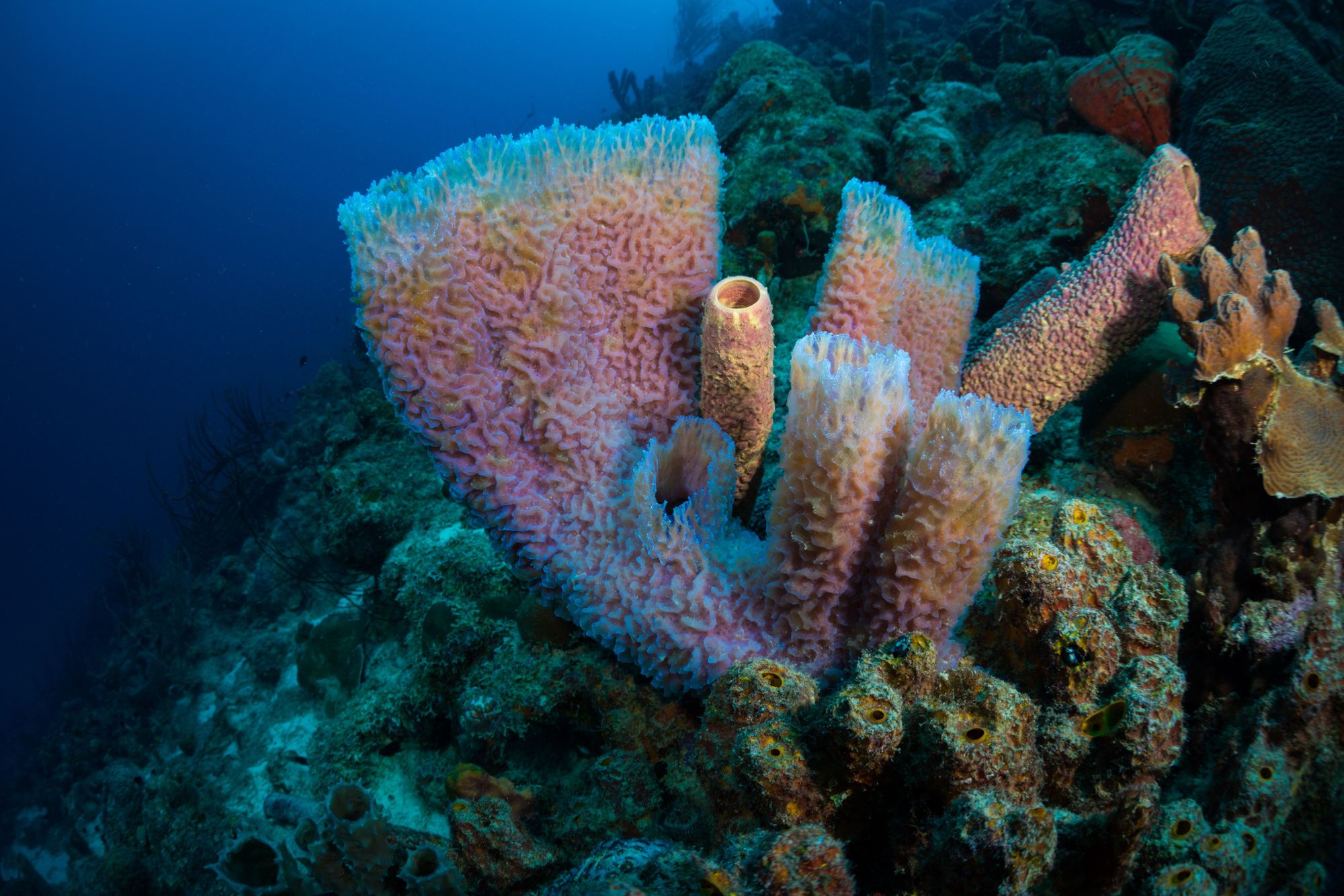
Snorkeling at Bari Reef in Kralendijk, Bonaire, is bound to be a thrilling adventure. To get to the beach, you would need to enter through another beach nearby. Beachgoers are advised to wear comfortable shoes for the rocky shores. Near the concrete structure in this area, snorkelers will see lots of coral and an even wider variety of fish. These include trumpetfish and bluehead wrasse among others.
Lac Bay (Sorobon Beach)

A 15-minute drive from the capital of Kralendijk will take you to Lac Bay in Sorobon Beach. This bay has very shallow waters and, if you choose to dive here, you’ll need to swim out a bit to get to the best coral area for snorkeling. Once you get there, you will be rewarded with views of striking staghorn coral and sea life such as parrotfish, eagle rays, and flounder.
1,000 Steps

This beach gets its name from the steps one must climb to get to and from it. Though it is not 1,000 steps, it does require exercise. However, it is certainly worth the trouble due to the wide array of coral formations, sponges, and fishes found there. So pack your bags, put on some water shoes and start stepping in the right direction.
2. Saint Lucia

Saint Lucia is a small volcanic island located in the Caribbean Sea, nestled between Martinique and Saint Vincent and the Grenadines. This charming island is highly regarded for its amazing landscape, sandy beaches, lush vegetation, and its famous twin Piton mountains. All of these features have transformed this island into one of the leading vacation destinations in the Caribbean.
Saint Lucia’s ecosystems and coral reefs have been well preserved over the years, which has helped protect some of the island’s best snorkeling spots. These can be found all over the country and are suitable for snorkelers of various levels of expertise. Here’s what you need to know about snorkeling in Saint Lucia.
Our favorite snorkeling spots in Saint Lucia:
Anse Chastanet

Anse Chastanet Beach is a popular snorkeling spot found in the community of Soufriere where the island’s world-famous Pitons are also located. Since this beach is part of a marine reserve, the sea life is protected and snorkelers get to enjoy this special opportunity. Whether you're a beginner or a more advanced snorkeler, you can have this experience while in Saint Lucia. As you snorkel on this beach, you’re likely to see parrotfish, octopus, flounder, and scorpionfish.
Reduit Beach

Reduit Beach is in the north of Saint Lucia in the community of Rodney Bay. This is a popular commercial and tourist area. The beach here has a relaxed atmosphere and it is popular with both locals and visitors. Snorkelers who are just starting off will enjoy an experience in these gentle waters where they can see tropical fish, crabs, eels, and more.
Marigot Bay

Marigot Bay is a sheltered cove with shallow waters and beautiful scenery. This makes it perfect for a day at the beach whether you'll be spending time with family or the love of your life. Snorkeling at Marigot Bay is relatively easy, so children and beginners can have some safe fun. You’ll discover several large coral formations at the bay's northern end, and enjoy the sight of exotic fish and even seahorses.
Expert tip: Staying at one of the all-inclusive resorts in Saint Lucia allows you to experience some of the best snorkeling in the Caribbean. Some of these resorts are located on the best beaches on this island.
1. Curaçao
Curaçao is the last island in the “ABC” chain of islands, along with Aruba and Bonaire. This long, flat island has an area of about 180 square miles and it measures only 40 miles from southeast to northeast. Though it is still pretty small, it is actually the largest “ABC” island.
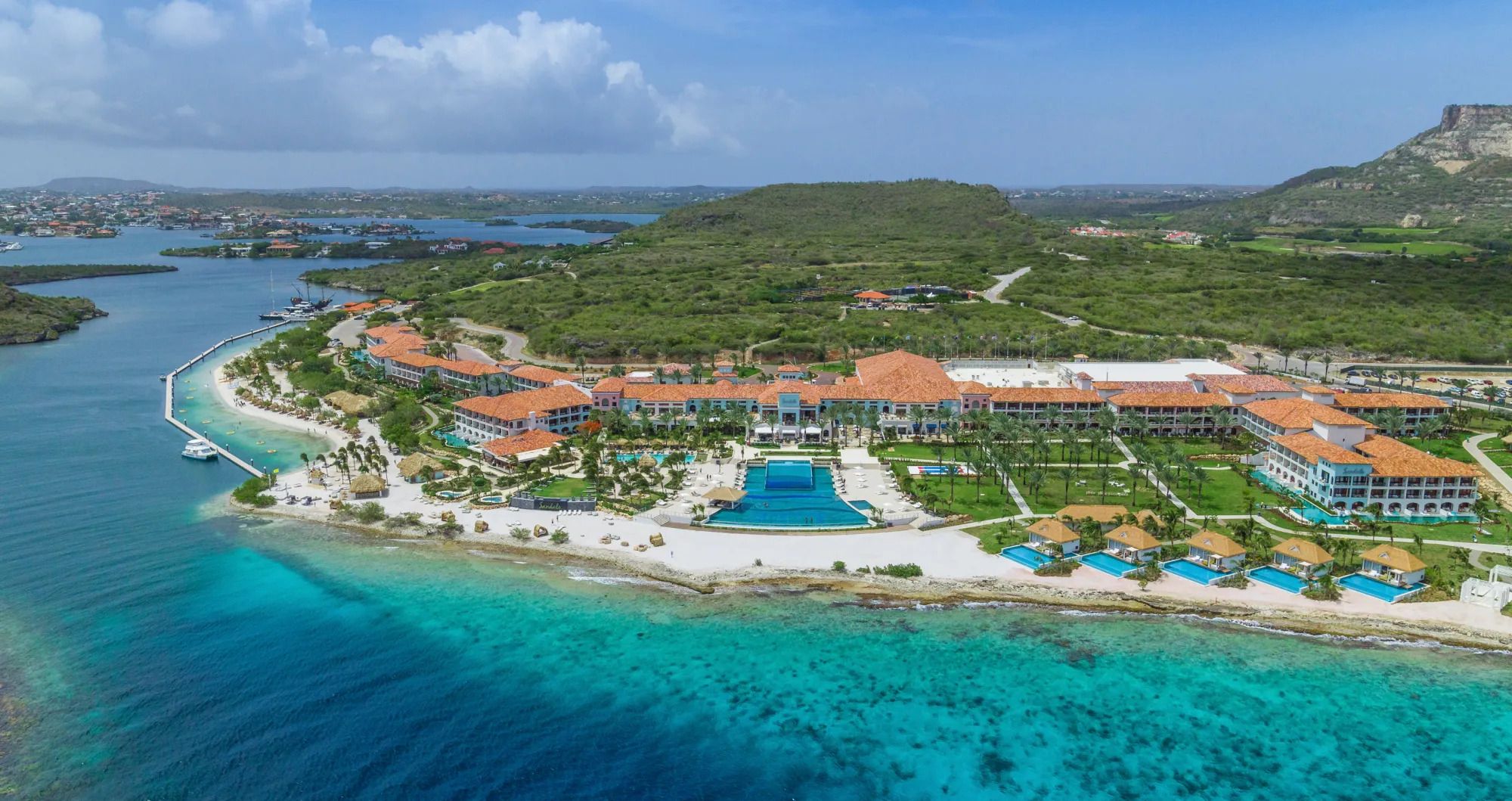
Picture: All-inclusive resorts Sandals Royal Curacao. Enjoy limitless cocktails and food, included in your booking price!
Nevertheless, there is still so much fun you can have in Curaçao, whether it be visiting the amazing beaches, learning about its history and culture, or enjoying its natural attractions. You simply can’t get bored! In fact, its beaches have made it quite popular, and snorkeling is quite common here with many spots available just offshore without the need for a boat. This makes it easy and convenient to go snorkeling during a Curaçao vacation.
Our favorite snorkeling spots in Curaçao:
Tugboat Beach

This beach is named after a tugboat that can be found just 16 feet in the water after sinking more than 30 years ago. Since then, it has become very popular among scuba divers and snorkelers eager to explore the shipwreck. Brain coral, sea fans, snapper, moray eels, and surgeonfish can all be found near these ruins.
Little Knip Beach (Playa Kenepa Chiki)
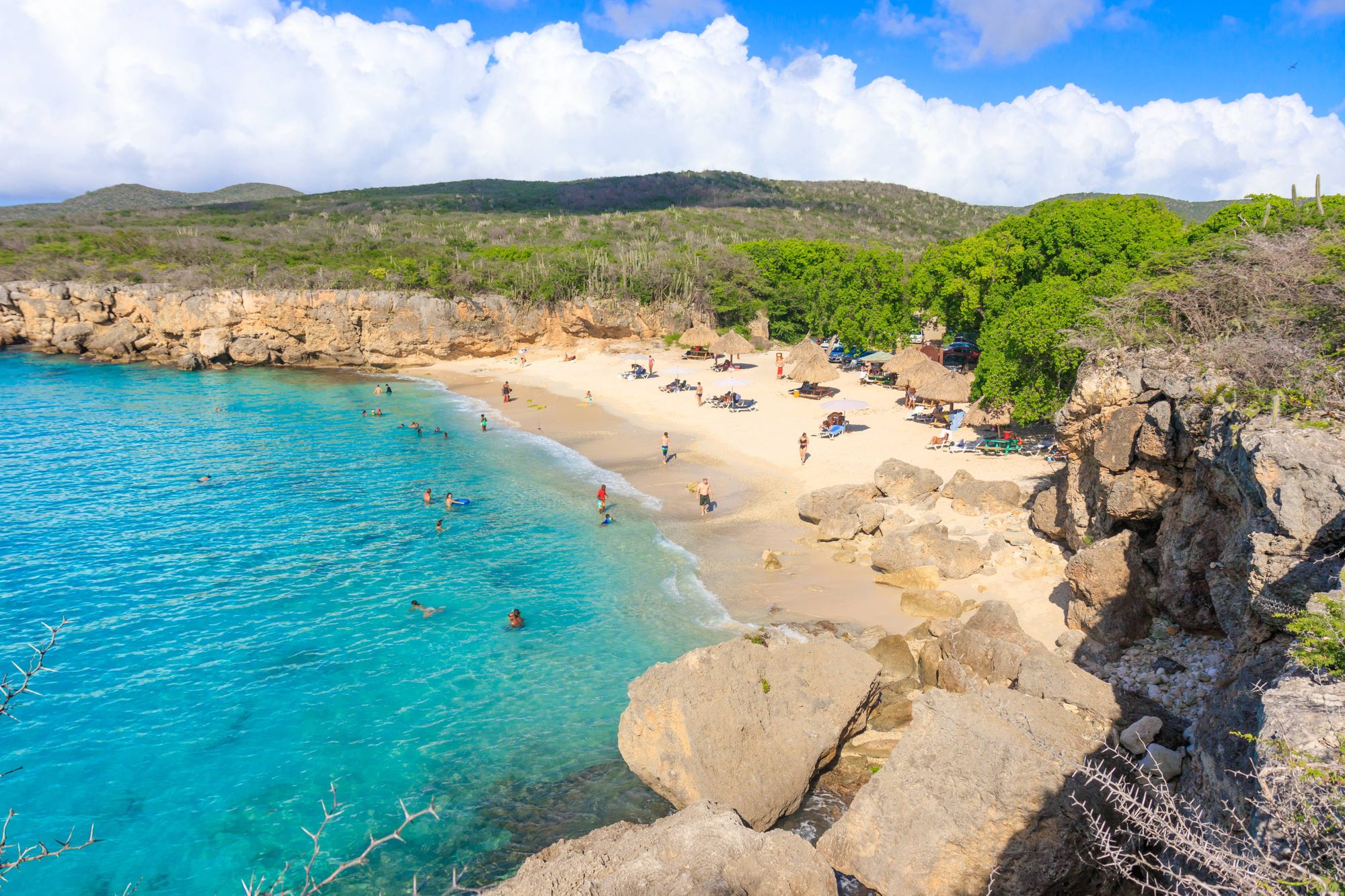
Little Knip Beach is a small but isolated beach in northern Curaçao in the western part of the country. Its remote location means that it is kept authentic and undisturbed, making it ideal for snorkelers who simply want to explore the waters uninterrupted. You should try snorkeling on the left side of the bay where all the tropical fish like butterflyfish and barracuda, as well as corals like brain coral, sea rods, and sea fingers, can be found.
Klein Curacao
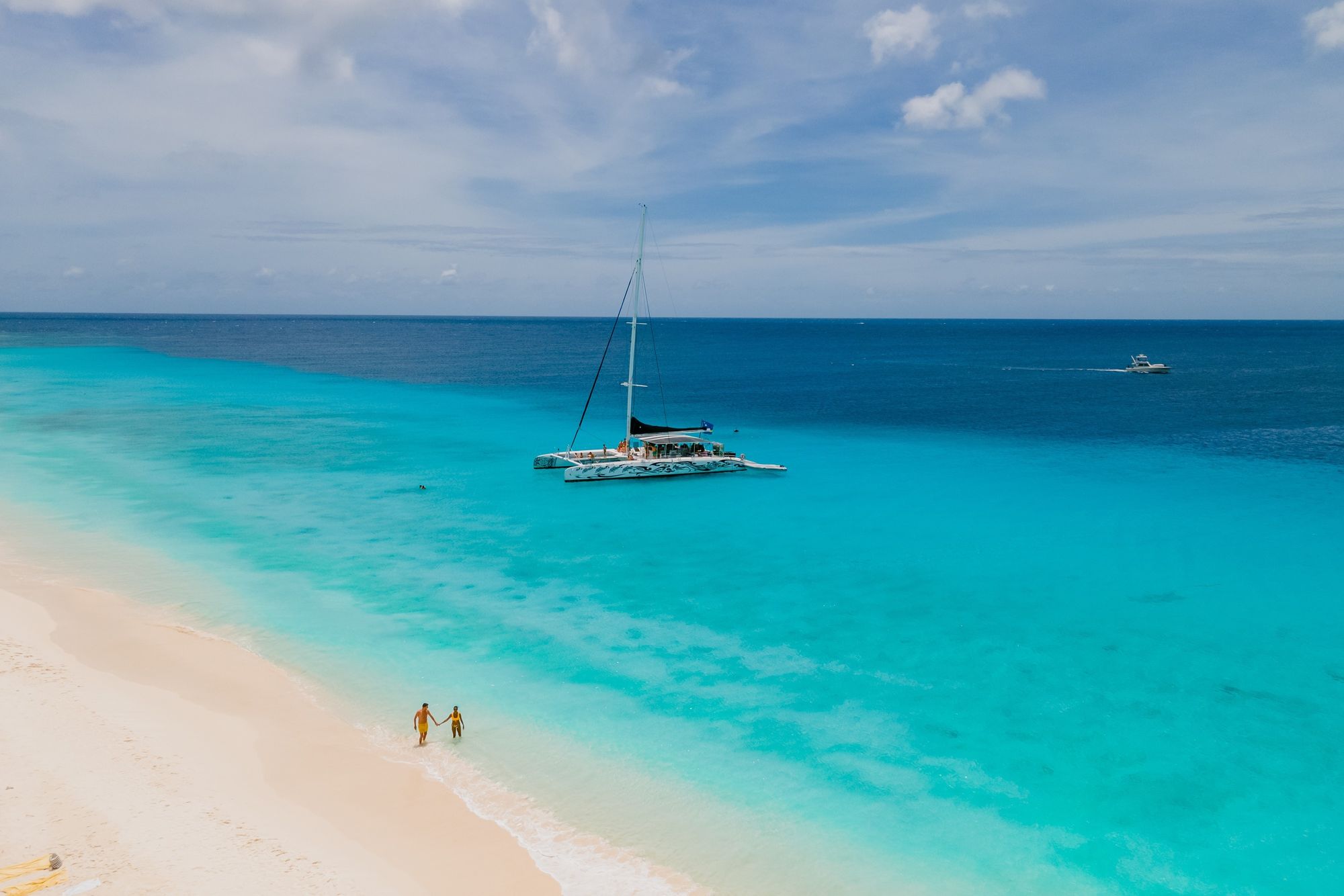
Klein Curaçao or ‘Little Curaçao', as it is known, is a small island situated about six miles from Curaçao. Boat trips take visitors from the mainland to this exclusive hideaway where you can explore, bathe, scuba dive, and snorkel as much as you like. Keep an eye out for bonefish, flounder, hogfish, and other marine life amongst the coral reefs.
Playa Lagun

Playa Lagun is a small cove with a beautiful beach that is popular among local and visiting beach lovers. The rock cliffs add to the impressive landscape of this area while also serving as a home for various fish. Snorkelers also benefit from the variety of sea animals like sardines, snappers, and wrasse.
Good to know: Sandals Resorts’ all-inclusive resort in Curacao just might be the perfect place to stay during your snorkeling vacation in Curaçao.
Experience the best snorkeling in the Caribbean
The Caribbean region is known for its crystal-clear waters, vibrant coral reefs, marine parks, and thriving marine life. There’s nothing quite like experiencing the ocean from beneath the waves while encountering myriads of colorful and fascinating sea creatures. You might even be able to explore underwater caves and take boat rides out for some of the most exciting reef adventures!
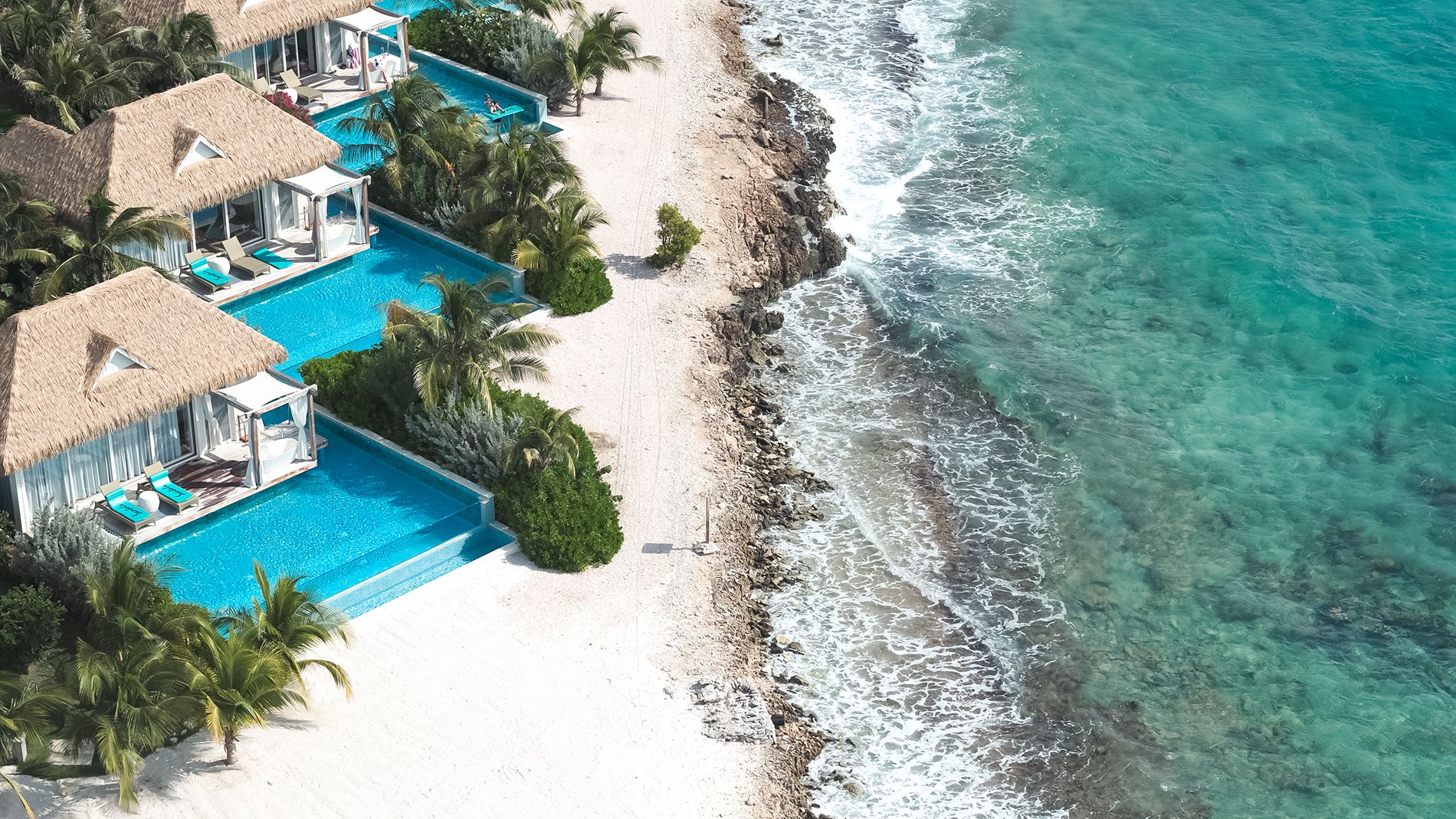
Private pool suites at Sandals Royal Curacao. The best part? All drinks are on us!
If you choose to go to a top snorkeling destination like Curaçao, Saint Lucia, Antigua, or Grenada (among others), you can stay at a Sandals all-inclusive resort where snorkeling and scuba diving (up to 2 tanks per day) are included! This includes professional-quality dive gear and instruction. There are also lots of other quality inclusions at these resorts like multiple themed gourmet restaurants, multiple bars including swim-up bars, day and night entertainment, land and water sports, and so much more!
